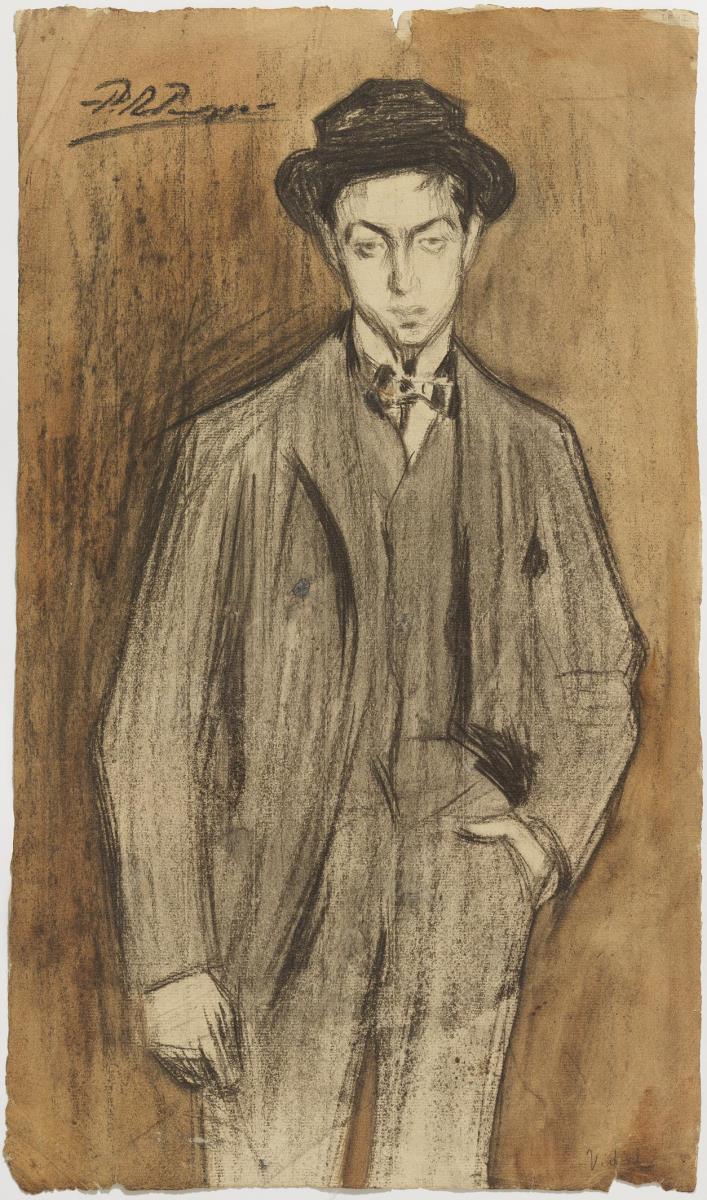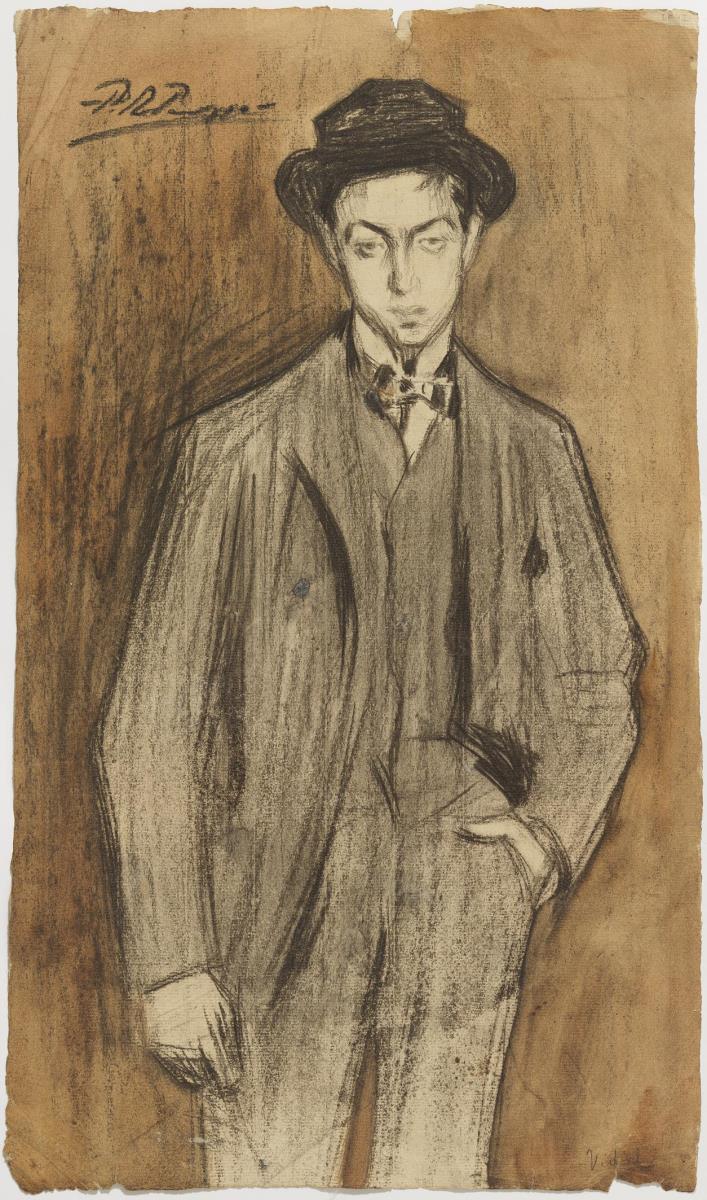Joan Vidal i Ventosa

Joan Vidal i Ventosa
1900
Joan Vidal i Ventosa
For the exhibition of drawings that Picasso presented in February 1900 at the Quatre Gats tavern, which aspired to achieve the success of the show that Ramon Casas had held four months before at Sala Parés, the understanding and implication of his sitters provided a huge stimulus. At all times Picasso counted on the unconditional support of some of his colleagues who, as well as posing patiently for the artist, opened the doors of their homes and studios to him. One of them was Joan Vidal i Ventosa (Barcelona, 1880–1966), whose atelier, El Guayaba, was a frequent meeting point.
Picasso’s command of drawing and his technical skill for expressive, spontaneous strokes enabled him to complete the show in a short space of time and present a hundred drawings, one of which was this portrait of his friend Vidal i Ventosa. As usual, during the time he spent preparing the exhibition, his style experienced a swift development: thus, while the figures in his early portraits were set in specific spatial frameworks, in his last works they would appear surrounded by simple washes.
Even though the composition was a charcoal exercise in black and white, Picasso completed the work with a wash that helped him define and outline the figure. According to Palau i Fabre, quoting, in turn, the version of Vidal i Ventosa himself, the wash or dye colouring the paper was applied by Picasso dipping the paintbrush directly into a cup of coffee. The truth is that it is applied directly and with determination, respecting the original colour of the paper in the area of the figure and thereby highlighting the chiaroscuro effect. Due to the changes suffered by the support over the years, this contrast has gradually faded and today the work shows the homogeneous effect of an enveloping patina. Picasso, who executed the portrait skilfully, albeit somewhat stiltedly, succeeded in rendering his friend’s likeness and captured the spirit of the character by emphasising the youth of the face and the shyness of a downcast and somewhat lost gaze. Although Vidal i Ventosa had connections with the art world, strictly speaking he was not himself an artist. After dedicating himself initially to the fields of pyrography and restoration of art works, he worked as a photographer for Barcelona’s municipal museums and became a first-hand witness of the conservation process of the Romanesque art in the Catalan Pyrenees.
1900
47.8 cm x 28 cm
Purchase, 1967
MPB 70.802





